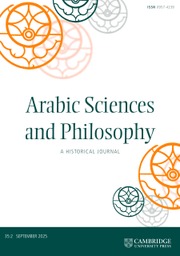No CrossRef data available.
Article contents
AL-SUHRAWARDĪ’S PHILOSOPHY CONTEXTUALIZED
Review products
Published online by Cambridge University Press: 12 February 2024
Extract
When in 1868, Alfred von Kremer (1828–89) in his Geschichte der herrschenden Ideen des Islams (“History of the Ruling Ideas of Islam”) introduced al-Suhrawardī for the first time to a Western readership, he presented him as a freethinking Sufi devoted to “theosophy.” In a long chapter on Sufism, al-Suhrawardī appears under the heading “anti-Islamic tendencies.” Von Kremer characterized al-Suhrawardī's thought as a balanced mixture of three sources: Neoplatonic philosophy, a Zoroastrian theory of light, plus Islamic monotheism. “According to the Arab biographers, his teaching was aimed at the destruction of the existing religion, which, however, they say of anyone who dared to oppose the ruling orthodox party.” Expressing views that openly contradict the ruling religion, von Kremer wrote, meant putting one's life in danger. In accordance with that explanation, al-Suhrawardī died as “a martyr for his convictions” after the all too powerful group of orthodox scholars obtained his death sentence from Saladin.
- Type
- Essay Review
- Information
- Creative Commons
- This is an Open Access article, distributed under the terms of the Creative Commons Attribution licence (http://creativecommons.org/licenses/by/4.0/), which permits unrestricted re-use, distribution, and reproduction in any medium, provided the original work is properly cited.
- Copyright
- Copyright © The Author(s), 2024. Published by Cambridge University Press


